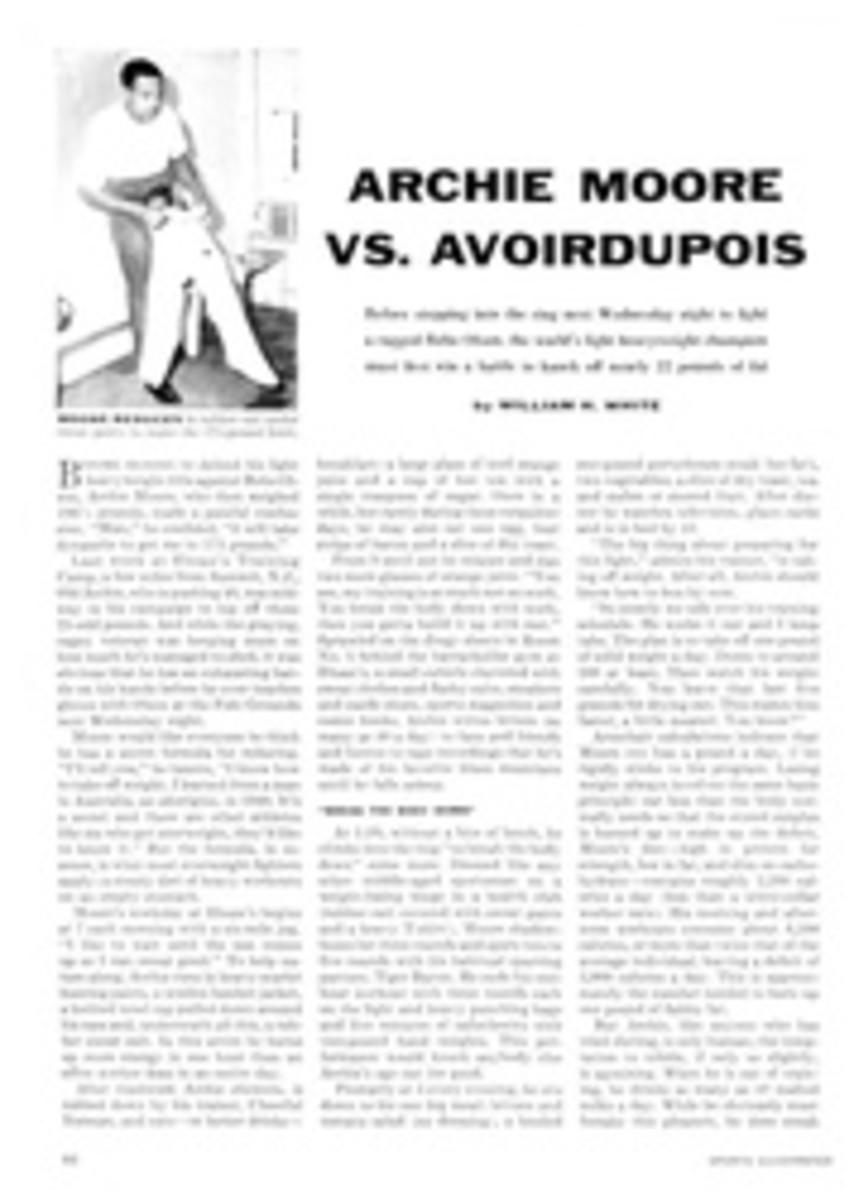
Color In The Dust
Twenty-five years ago the worst punishment a teacher could impose on a boy was to confiscate his marbles. In those days boys would shoot marbles all the way to school, during recess and all the way home again. In draw-string bags or reinforced pockets they carried their ammunition—beautiful agates, chinas and glassies, and sometimes a bloody-colored bamboozler, which was their favorite taw (shooter). Stakes ranged from commeys, a cheap clay marble important only in the number won or owned, to treasured agates of real carnelian which had bull's-eyes (see opposite page). Bleeding knuckles were accepted by all boys as part of the sport.
Last week a boy in Central Park, New York was shown an aggie (marblese for agate) and couldn't identify it, confessing he had no idea how to play marbles. Another boy, shown an immie (glass imitation of an agate), responded enthusiastically, "Oh, those!...Sure, we throw 'em under buses to hear 'em crack!" It was the same in Boston, Dallas and Los Angeles. But a spot check across the nation showed that, while mibs shooting is dead or dying out in some large cities, it is flourishing as enthusiastically as ever in rural areas. In fact, for some weeks now, more than a million mibsters have been knuckling down in hundreds of towns in preparation for the national marble championships which are this week being staged in Asbury Park, N.J. and Denver, Col. by the V.F.W. and Scripps-Howard papers.
Marbles is more an occasional diversion now, rather than the deadly serious business it was 25 years ago when a good fist fight could and often did break out over a disputed shot. Lack of playing space has pushed marble shooting back into the playgrounds of schools and recreation parks, and it is here that the game is annually organized into a nation-wide competitive sport. Ringer remains the favorite game—13 marbles knocked out of a 10-foot ring. But 25 other variations are also played, including pug, bing ring, pooning, bunny and purgatory.
The average boy in the street may no longer be hep to marble lingo, but serious mibsters still use it. A shout of "everees" means a player can do almost anything, including "hist" (shoot from elevated position) and "round" (move marble in the circle). "Fen everees" denies the opponent all privileges. "Larees" claims the last shot and "dakes" means stakes are for keeps.
Marbles in one form or another has been played in the U.S. since colonial days, and there has been little change in playing methods since those days; or even through the centuries before. The Aztecs are known to have played a form of marbles, and American Indians were found playing a game similar to one colonists had played in England. It was while playing immies with his son that Vice-president Andrew Johnson was informed President Lincoln had been shot. Harold Reese, of baseball fame, got his nickname Pee Wee (meaning small marble) after winning a mibs tournament as a boy.
Prior to World War I virtually all good marbles used in the U.S. were imported from Germany. They were expensive, however, and clay pawns or commeys were in more general use. When glass marbles (immies, pureys) were introduced in the U.S. at the turn of the century, they set a new fashion which has prevailed to this day.
But no glass marble ever matched the incomparable, genuine carnelian (agate) which is no longer sold. Today's marbles are poor imitations of those produced 25 years ago, although they cost one and a half times as much to make as did the moonstones.
Quantity has replaced quality and how many a kid can get for a nickel (now 19) is more important than beauty of the marble. Red is still the favorite color, with green next.
Sport isn't the only thing in a marble's life. Used for play by the Chinese as early as 4,000 B.C., probably by Egyptians in the 14th century B.C., and by the Romans before the Punic Wars, this little round ball of glass supports a million-dollar industry. The U.S. has dominated the marble business since the first marblemaking machine was introduced in 1915. Today seven marble factories (six in West Virginia) are kept busy making glass balls, and together the industry produces some 650 million a year, of which 85% are for sport. The rest are variously employed as highway reflectors, decorations for fishbowls and even for easing coffins into mausoleums.
But despite its many outlets, the U.S. marble industry is facing a serious crisis. The threat comes from the East: slant-eyed aggies, the colloquial for marbles made in Japan. Completely underselling American marbles, the Japanese product has already taken over the West Coast business and is expected to capture 50% of the market by next year unless U.S. marble makers can force higher tariffs to protect their industry.
Whatever the outcome of this crisis one thing is almost certain—as long as there are spring and room enough to play, mibsters will somewhere be knuckling down to the unchanging game of immies.
PHOTO
PHOTO
RICHARD MEEK/MARBLES FROM THE COLLECTIONS OF SELLERS PELTIER AND BERRY PINK
Genuine Carnelians (agates) also called flints, aggies and realies were original handmade shooters. Now collector's items, they are still the most treasured of all marbles.
Peppermint Stripes were among first glass marbles imported from Germany but high prices limited popularity. This candy stripe variety was semimechanically made.
First American glass marbles were poor imitations of imported candy stripes. Far more popular in the 1850s were cheap, fired-clay marbles (right) called miggles and commeys.
Cat's Eyes, made from used crystal (old bottles, etc.) were first cheap glass marbles made. Colored whirl design injected mechanically into center was not favored by mibsters.
Immies were popular replacement of hard-to-get agate shooters. Mass produced by machine, their bright opaque colors immediately caught the fancy of finicky marble players.
Rainbows, also called immies, were introduced in 1928 by Peltier Glass Co. and became hot marble currency and are still favorites. Kids like their separated-stripe design.
Marines, made of colored crystal, were a passing fad, being replaced in popularity by moonstones (below). New and booming market for them today is as decorations for aquariums.
Moonstones (moonies and pureys), developed by rival firm to offset popularity of Rainbows, were most beautiful and costly marbles and included the famous bloody.
Scrap Glass marbles made from old colored jars flooded market during World War I and marked the end of beautiful marbles. Marbles of today (right) are of poorer quality.
Japanese Cat's Eyes, now being imported in millions, are threat to U.S. marble industry. Different and more colorful than today's U.S. marbles, they are a big hit with kids.

